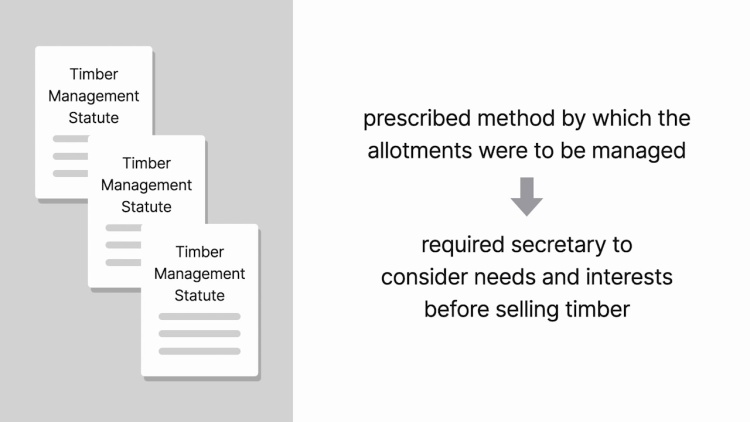United States v. Mitchell
United States Supreme Court
463 U.S. 206 (1983)
- Written by Lauren Groth, JD
Facts
In 1887, the United States government (defendant) allotted land to Mitchell and other individual Indians (plaintiffs) under the General Allotment Act (GAA), 25 U.S.C. § 331 et seq. Much of this land could not be inhabited, but contained valuable timber. Over time, the secretary of the interior (defendant) began to manage the foresting of timber from these allotments for the Indians. The Act of June 25, 1910 (Act), 25 U.S.C. §§ 406-07, authorized the secretary of the interior to sell timber on behalf of the Indians and provide the Indians with the proceeds. The Department of Indian Affairs also created guidelines and regulations to govern this process. However, the Indians gradually became aware that the process was not being managed properly and was not serving their best interests. Consequently, the plaintiffs sued the United States for a breach of trust duties. The court of claims held that the Act imposed a fiduciary duty on the United States. The United States Supreme Court reversed this decision and remanded the case to the court of claims, finding that the Act did not create a fiduciary relationship between the Indians and the United States. On remand, the court of claims held that the United States was liable for a breach of trust. The Supreme Court granted certiorari.
Rule of Law
Issue
Holding and Reasoning (Marshall, J.)
Dissent (Powell, J.)
What to do next…
Here's why 899,000 law students have relied on our case briefs:
- Written by law professors and practitioners, not other law students. 47,000 briefs, keyed to 994 casebooks. Top-notch customer support.
- The right amount of information, includes the facts, issues, rule of law, holding and reasoning, and any concurrences and dissents.
- Access in your classes, works on your mobile and tablet. Massive library of related video lessons and high quality multiple-choice questions.
- Easy to use, uniform format for every case brief. Written in plain English, not in legalese. Our briefs summarize and simplify; they don’t just repeat the court’s language.





